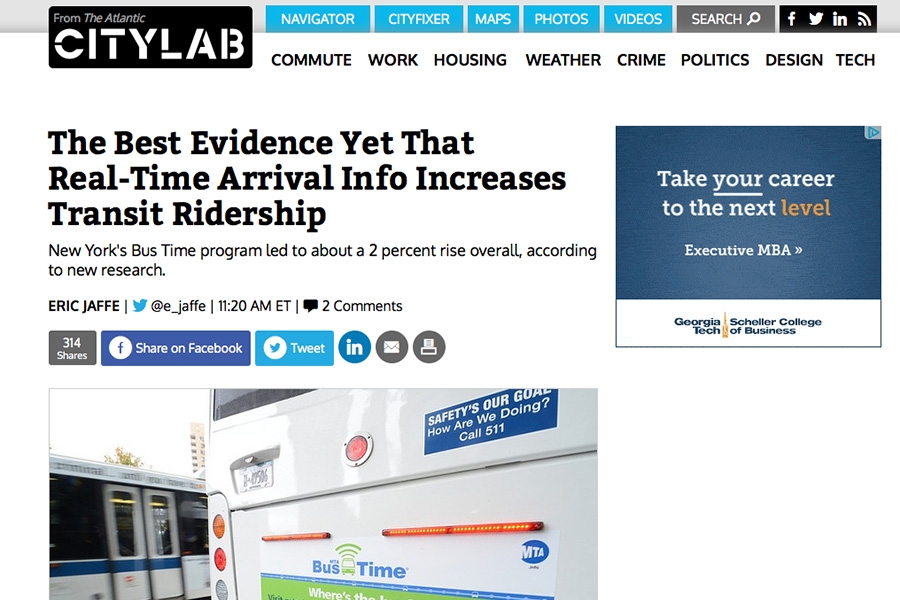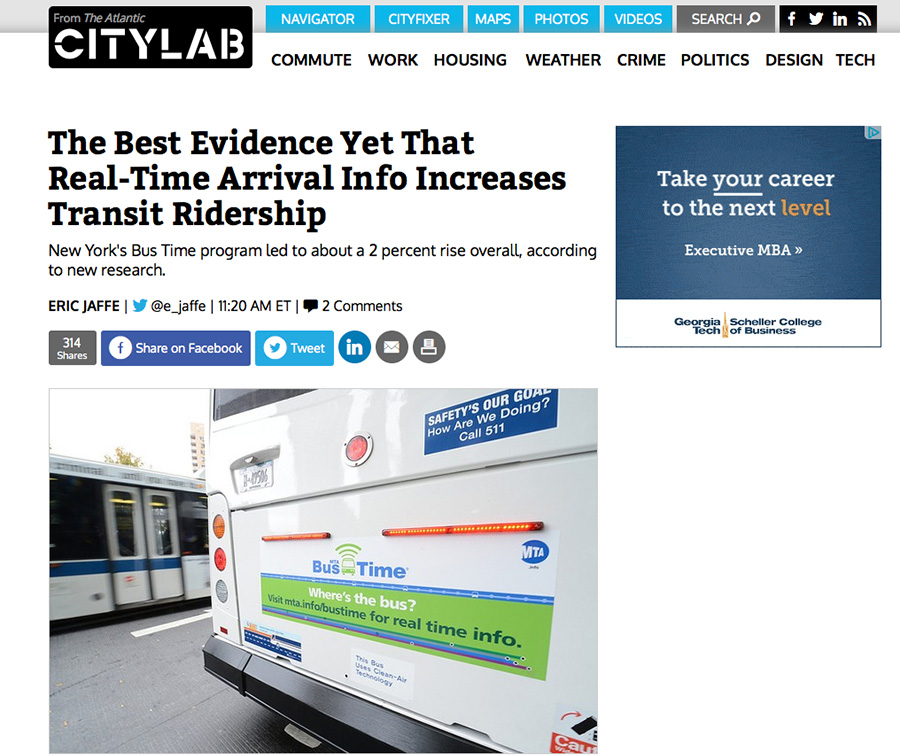

 Brakewood |
Giving bus riders real-time information about when the bus will arrive actually does increase the number of people who choose to hop aboard.
The boost mostly comes on high-volume routes. But overall, it could mean millions more dollars in revenues for public transit agencies.
That’s what School of Civil and Environmental Engineering alumna Candace Brakewood found in a three-year study of New York City’s bus ridership. She’s now an assistant professor at City College of New York, and the findings come from her Ph.D. dissertation at Tech.
Her work assessed ridership after the city deployed the Bus Time website, which offers real-time arrival data to passengers. Bus Time is built on the source code for OneBusAway, a transit-info app built by CEE Assistant Professor Kari Watkins (who was Brakewood’s adviser).
Read more about Brakewood’s findings from CityLab’s Eric Jaffee:
It's obvious why transit riders love real-time information: they can plan their trip and shed the psychological angst that comes with waiting for the next bus or train. But the question for cities is whether or not people love it enough to choose transit over another mode. In other words, is real-time data just a nice way to keep existing riders happy, or is it an investment that will pay off in brand new riders over time?
A new study of a real-time bus arrival program in New York City offers an encouraging (if qualified) answer: it does generate new trips, though mostly for high-traffic routes. Candace Brakewood of the City College of New York and collaborators analyzed ridership patterns following the city's roll-out of its Bus Time website. In a new paper they report a measurable jump in ridership (around 2 percent) that works out to upwards of $6.3 million in new revenue over the three-year study period:
“Although the increase in weekday route-level ridership may appear modest, on aggregate these increases exert a substantial positive effect on farebox revenue."
